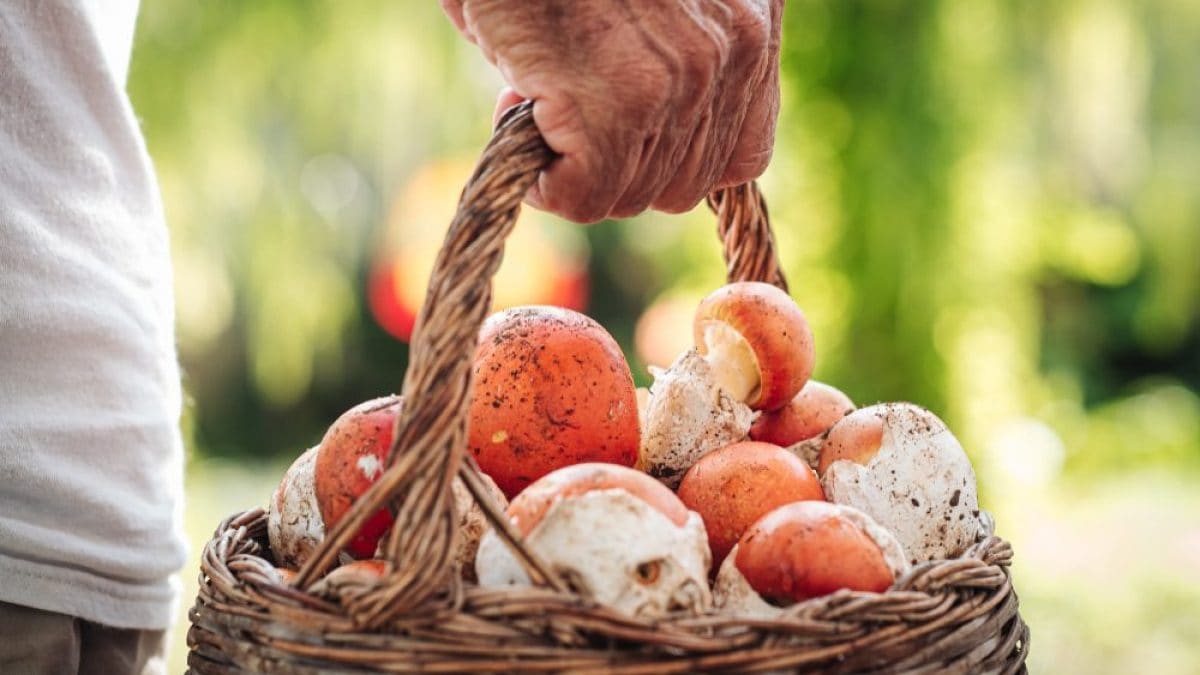
Mushrooms are truly delicious and are also an ingredient with great potential that adapts to many different preparations: you can use them alone as a side dish, for example sautéed or breaded and fried, you can use them in the preparation of sauces, broths and risottos, you can add them to the filling of fresh pasta or use them to cook meat.
In short, you can do just about anything with mushrooms! However, you need to be very careful about which type you use: not all mushrooms are edible; in fact, many are downright poisonous. The advice is to always buy them from trusted retailers, but also to learn to recognize and distinguish the main types of edible mushrooms.
And now is the perfect time to do it. During the early days of fall, in mountainous areas with the right combination of altitude (between 1,000 and 2,000 meters), rainfall, sunshine, and vegetation, the most prized mushroom varieties grow. In this guide, we'll explain which are the best edible varieties and where you can pick them.
1. Summer Porcini Mushrooms and Russulas
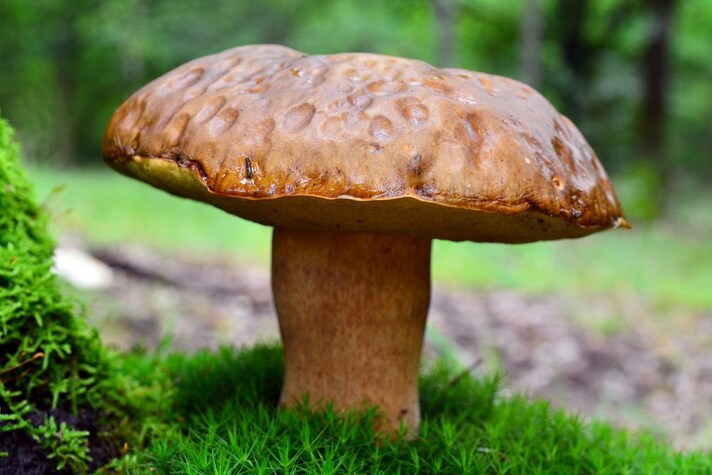
The months when mushrooms are most abundant are July and August, with some special specialties in September, but June also begins to produce interesting things. For example, it's the month of Boletus aestivalis, known as the "summer porcini": tasty and fragrant, it grows in open spaces (clearings, for example) or on the edges of chestnut groves. The same habitat, but with an undergrowth of blackberry and heather, is also home to the red porcini (Boletus pinophilus).
From June, you can also find Russulas, also commonly known as columbines: they are a particularly large family of mushrooms, represented by over two hundred species. So be careful when picking, because some types are edible while others are downright toxic; among the edible species, the greater columbine, the golden columbine, the green columbine, and the pink columbine stand out. Generally, this type of mushroom grows in coniferous and broadleaf forests.
2. The Orange Ovule, the Amanita Caesarea
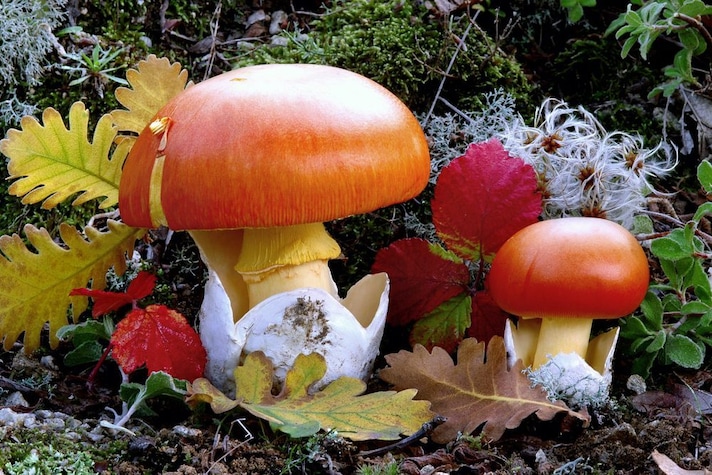
The most recognizable mushroom of the Mediterranean, of the chestnut and oak forests, the Amanita caesarea, or "good egg," is one of the first to appear in July, especially after heavy rains. Known since Roman times as the "food of the gods," it is characterized by the bright orange color of its cap. Be careful, however, to pick it when it is fully open: when closed, it resembles an egg, easily confused with other poisonous egg-shaped mushrooms. In the kitchen, it is highly prized for eating raw in salads, dried, or preserved in oil and vinegar.
3. His Majesty the Porcini Mushroom
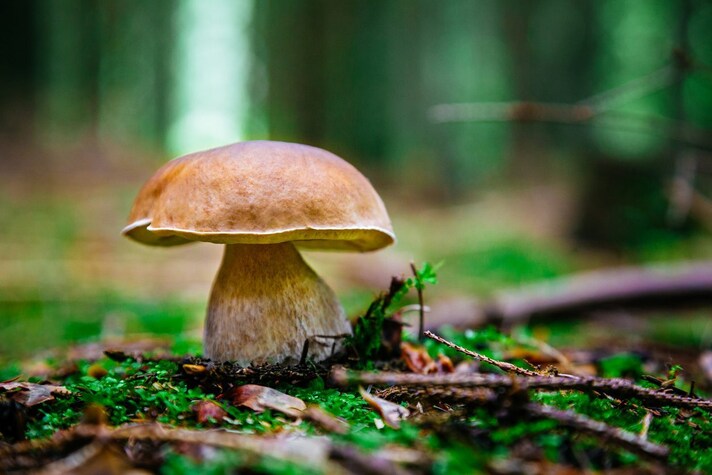
From mid-July to late September, the king of all mushrooms arrives, the most prized and beloved of all: the porcini, the most beautiful to look at and the most flavorful in the kitchen. The most sought-after variety is the Boletus edulis, unmistakable with its white stem and light brown cap; it grows in the moist, berry-rich undergrowth above 1,500 meters and has firm, fragrant flesh with a delicate flavor. It is widely used in a wide variety of recipes, but is particularly loved on tagliatelle and in risotto.
Edulis is certainly the most famous, but there are other porcini varieties that grow in July and are equally delicious. One of the best-known is Boletus areus or black porcino, characterized by its very dark brown, almost black, cap. Also popular is Boletus pinophilus or pinicola, which is characterized by its reddish-brown cap.
4. Chanterelle, The Yellow Delicacy
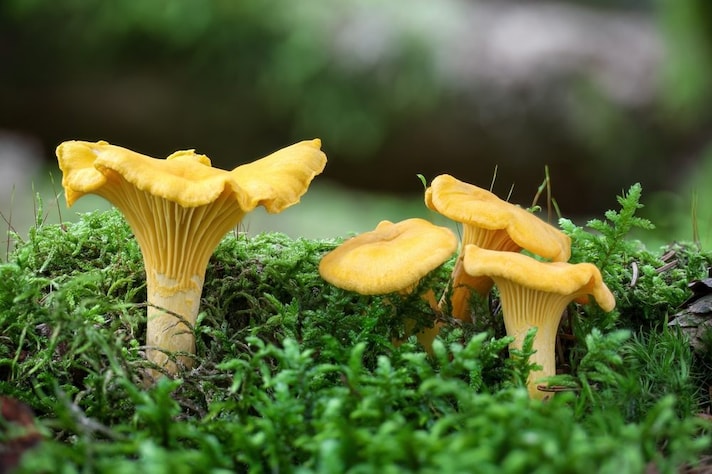
Between July and August (but actually until late September), the meadows at the foot of the fir and pine trees between 1,000 and 1,700 meters above sea level are dotted with truly unique mushrooms, funnel-shaped and bright yellow in color. This is the Cantharellus cibarius, also commonly known as chanterelle. If the porcini is the king of mushrooms, the chanterelle is certainly the prince: very beautiful with its short rosé and wavy cap, it has a sweet and aromatic flavor when cooked, but it also preserves very well in oil.
Chanterelle mushrooms are highly prized in the kitchen for their versatility, allowing you to cook them plain in a pan with garlic, oil, and parsley, or use them to make a white sauce for pasta or a creamy risotto. They're also excellent as an accompaniment to meat-based main courses, in soups, omelettes, or as a topping for a slice of toasted bread.
5. The Drum Mats
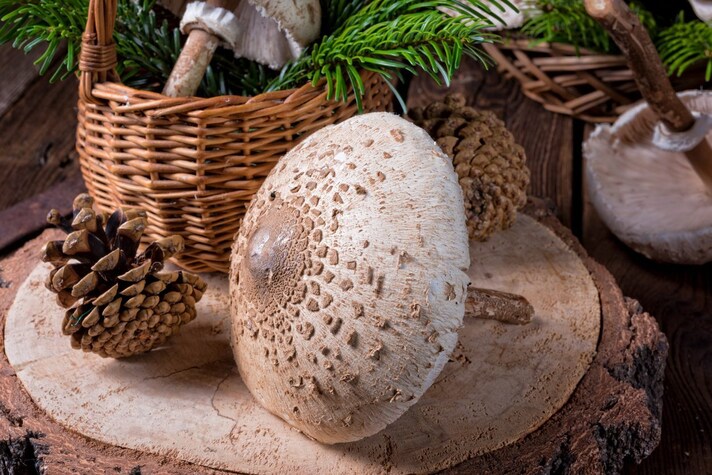
July and August are the months when Macrolepiota procera begins to emerge, commonly known as the "drum mata" mushroom due to its distinctive shape, with a very long stem and a large cap when fully open. It's a little-known but delicious mushroom, which in the right weather can survive until December.
Remember to always cook it before eating to inhibit toxins, and it's excellent both pan-fried in the oven and breaded and fried like a cutlet. Be careful when harvesting: like Amanita caesarea, this is an egg-shaped mushroom and, while still closed, can be confused with other toxic or poisonous species. Always harvest the drum mat when it's fully open and ripe.
6. The Finferla, Elegant and Delicious
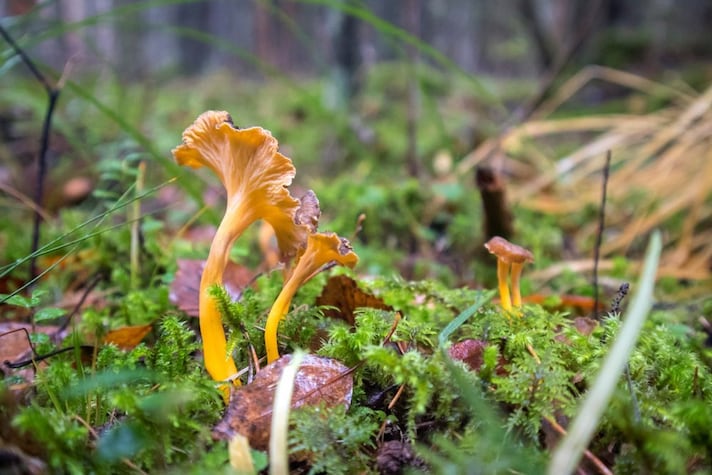
September is a very prolific month for mushrooms, and the woods, in addition to seeing the emergence of the aforementioned species, welcome a new species typical of this month. It's called Cantharellus lutescens, but is known as Finferla for its strong resemblance to the chanterelle. It grows primarily in Alpine forests with particularly moist soil. Finferlas are characterized by their unmistakable trumpet shape and bright color scheme: the thin, tubular stem ranges from yellow to deep orange, while the funnel-shaped cap is brownish-gray.
Although it's a lesser-known type of mushroom, Finferlas are actually very good to cook. Their flesh is elastic and firm, and has a distinctive fruity aroma that's hard to find in other species. They're particularly good for risottos or with meat.
7. Honey Mushrooms, The Mushrooms That Love the Cold
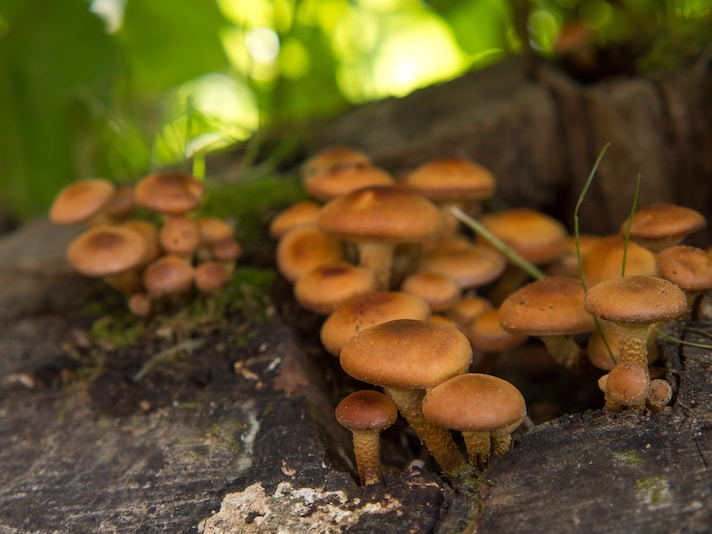
With the first autumn rains and the dropping temperatures, the tree trunks and stumps in the woods fill with honey mushrooms. These mushrooms love the cold, and among mountaineers, it's said that when they appear, the harvest is over and the forest is preparing for the change of season. Honey mushrooms are a variety of mushrooms belonging to the Armillaria mellea family and are very chameleonic: they change color and smell depending on the type of tree they grow on.
Honey mushrooms can be confused with other similar but toxic species, so if you have to collect them, learn to recognize them well. They are considered less valuable than other species but have a tasty flavor, especially when prepared in oil or sautéed in a pan. Remember that this type of mushroom should only be eaten cooked to eliminate some of the toxins it contains: to use them, you will therefore need to boil them for about 15 minutes and drain them, skimming off the foam that forms on the surface of the water. You can then use them in various recipes, such as these three we suggest.
8. Cardoncello, The Fall Mushroom
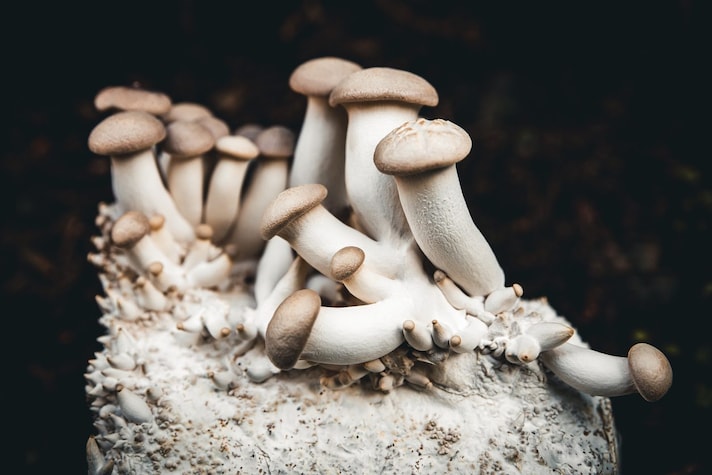
The king of fall in the woods of Northern America is the cardoncello, a mushroom that grows wild. Dark, fleshy, and firm, the cardoncello has become a true symbol of this area: several festivals celebrate it.
The Cardoncello, or king trumpet mushroom, known for its many beneficial properties, is a particularly prized mushroom that lends itself to a wide variety of preparations: it's delicious preserved in oil, sautéed in a pan, or baked au gratin, but it can also be enjoyed raw as a carpaccio, seasoned simply with olive oil, lemon, salt, pepper, and fresh parsley. Thanks to its sweet, bold flavor, the king trumpet mushroom pairs well with pork, wild boar, or game, and is also suitable for making pâtés and spreads.
;Resize,width=767;)
